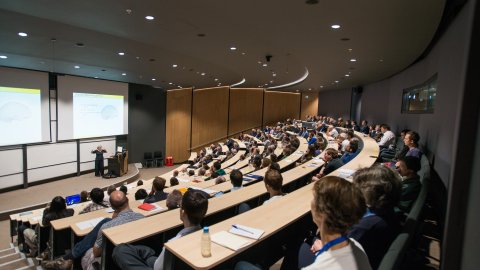Commuting probabilities of finite groups
Abstract
The commuting probability of a finite group is defined to be the probability that two randomly chosen group elements commute. Not all rationals between 0 and 1 occur as commuting probabilities. In fact Keith Joseph conjectured in 1977 that all limit points of the set of commuting probabilities are rational, and moreover that these limit points can only be approached from above. In this talk we'll discuss a structure theorem for commuting probabilities which roughly asserts that commuting probabilities are nearly Egyptian fractions of bounded complexity. Joseph's conjectures are corollaries.


